

Max Davies
How Audi, BMW, Honda, Mercedes-Benz, and Suzuki started out in Australia, and where they are now
8 Hours Ago
Mercedes-Benz is dialling in the final touches on its new-generation GLC mid-size SUV before its reveal later in 2022.

Contributor


Contributor
Can we go for a skid around the ice pan one more time please?
Mercedes-Benz is currently conducting final winter testing of its vital, second-generation GLC mid-size SUV at an icy test site in Arjeplog, Sweden ahead of its global debut in the German autumn (September to November, 2022).
Built on the same MRA 2 bones as the new C-Class, the new GLC draws inspiration from the current C- and S-Class models.
With the new C-Class not being offered in wagon or All Terrain crossover forms in Australia, the GLC will also be required to plug this gap, and build on the car’s success against the BMW X3 and Audi Q5.
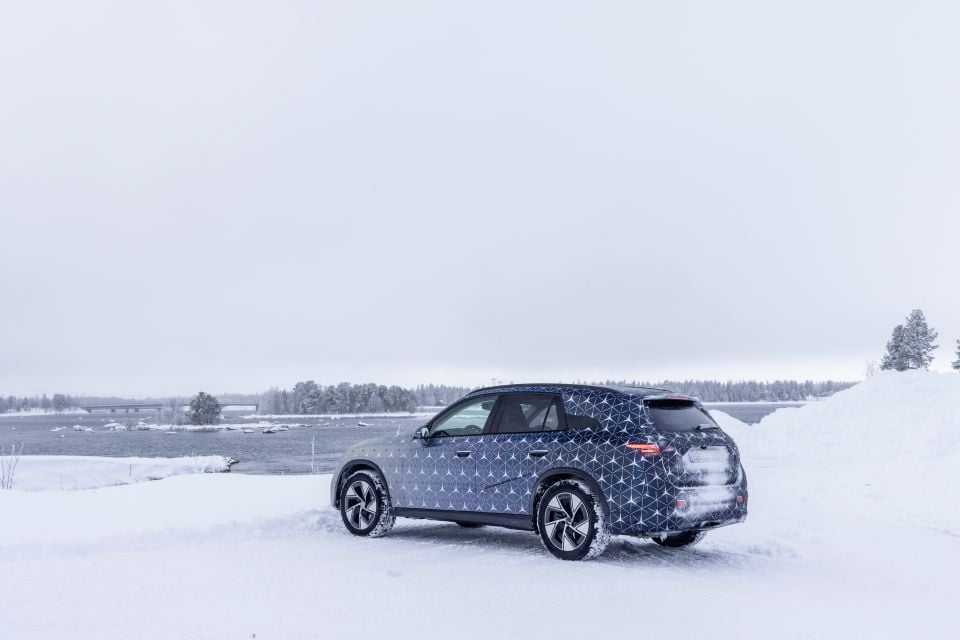
Development for this new GLC has taken around four years, with prototypes clocking up a claimed total of around 7 million kilometres.
Mercedes-Benz has taken the new-generation GLC to countries such as Germany, Austria, Finland, France, Sweden, Spain, Italy, Dubai, South Africa, USA, Mexico, China and Japan for testing purposes.
The three-pointed star explains the ratio of digital testing to real-world testing of this new GLC is 35 per cent to 65 per cent, respectively.
In the final winter tests, Mercedes-Benz has thrown snowy and icy roads, glacial winds and temperatures down to -30 degrees celsius at the new GLC.
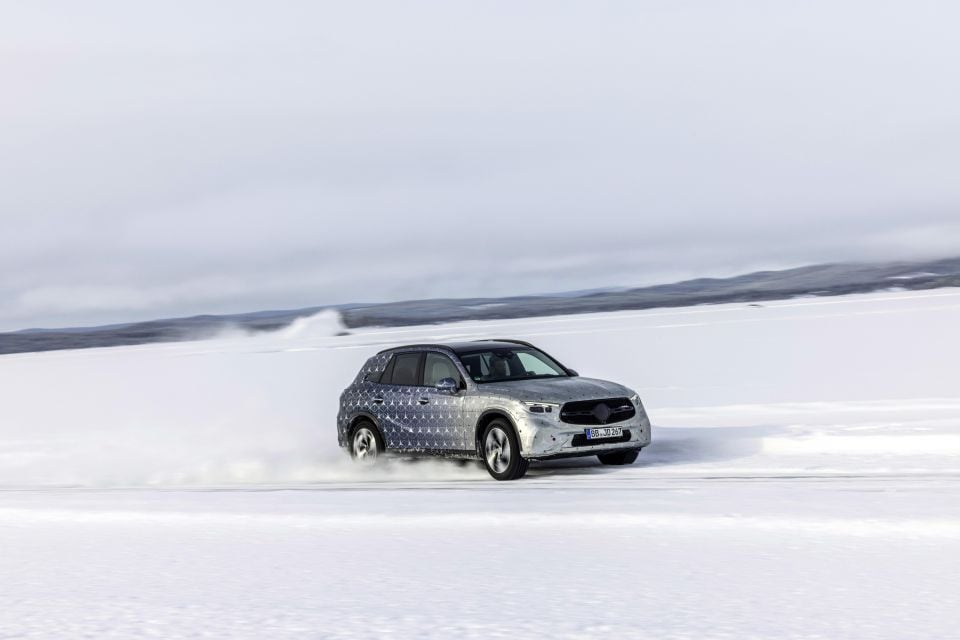
There has also been hill climbs with gradients of up to 20 per cent, handling courses and skid pads. These tests in particular put a lot of stress on the powertrain and traction control systems.
Mercedes-Benz said (naturally) the new GLC performed well across its major assemblies and if all the tests are passed, production tests will then commence.
The three-pointed star has confirmed the new-generation GLC will be available with a range of electrified petrol and diesel powertrains, as well as three plug-in hybrid (PHEV) powertrains.
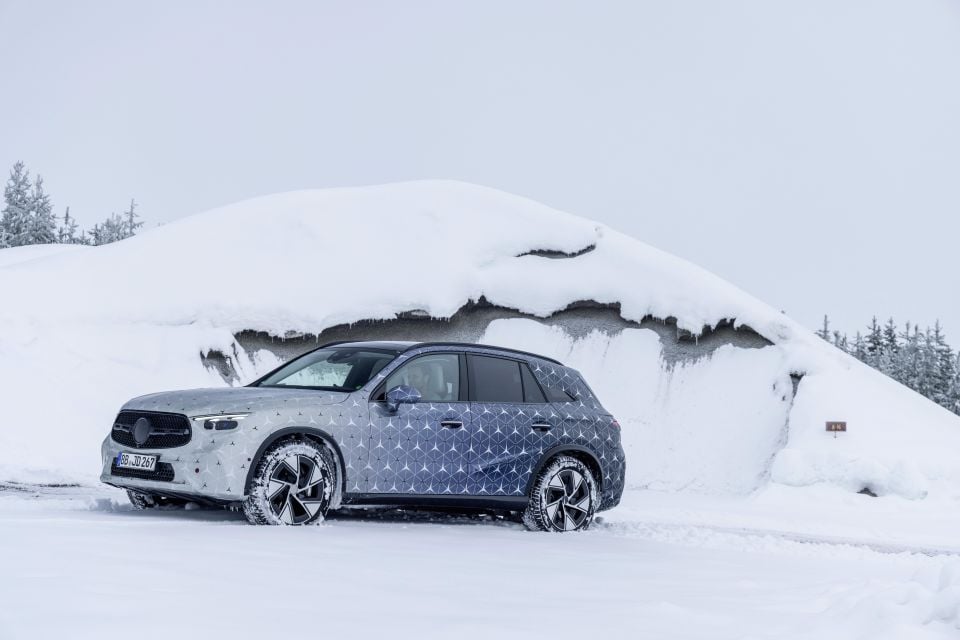
A 2.0-litre M254 turbocharged four-cylinder engine produces 190kW of power and 400Nm of torque. This engine is already used on the C300.
A 2.0-litre OM654M diesel with one or two turbos will produce up to 195kW and 550Nm, depending on the configuration.
Both of these powertrains feature a 48V mild-hybrid system with a starter-alternator that produces 17kW and 250Nm.
The three PHEV powertrains, two petrol and one diesel, have an electric motor that produces 100kW and 440Nm. They also have an all-electric range of “well over 100 kilometres according to WLTP”.
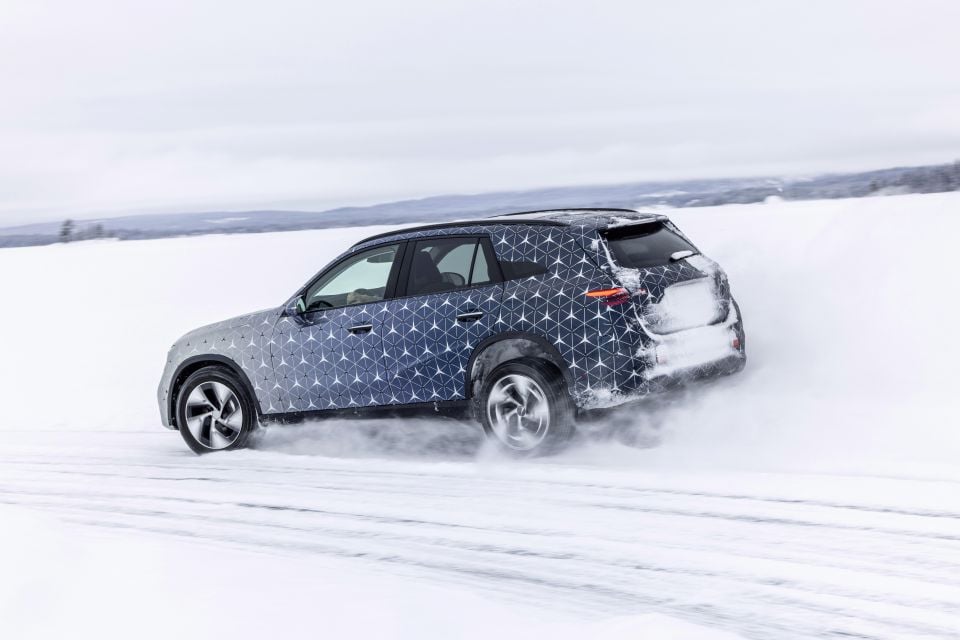
All models have a nine-speed automatic transmission with drive being sent through an all-wheel drive system.
The core GLC range is expected to launch locally with the turbo petrol powertrain and potentially one PHEV powertrain later on down the track.
In terms of off-road equipment, Mercedes-Benz has confirmed the GLC will be available with the optional Driving Package that includes air suspension, adjustable damping and rear-axle steering.
Inside the new GLC, the interior will be heavily inspired by the C-Class. It’ll have the same steering wheel, 12.3-inch digital instrument cluster and 11.9-inch infotainment touchscreen.
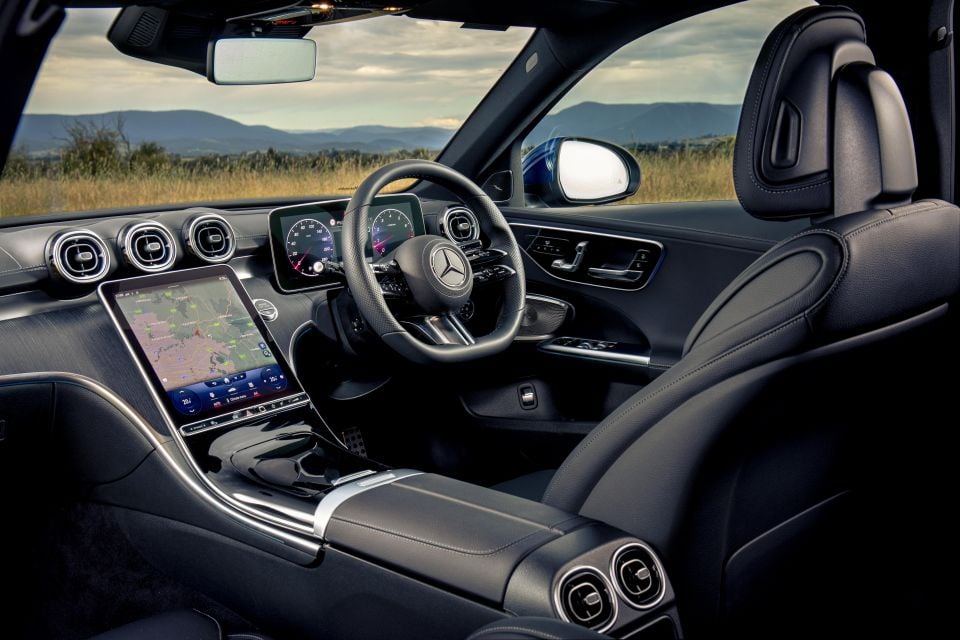
The GLC will also be running the second-generation of MBUX infotainment software which offers a voice assistant that can be triggered by the phrase “Hey Mercedes”.
There are going to be special Off-Road menus and driving modes, as well as an optional ‘transparent bonnet’ mode as part of the surround-view camera.
On the safety front, Mercedes-Benz has improved the adaptive cruise control to respond to stationary vehicles at speeds of up to 100km/h. Previously this was 60km/h.

Other new safety features include additional lane detection thanks to the surround-view camera, forming an emergency corridor at low speeds, and red light and stop sign recognition.
There’s also going to be an optional trailer manoeuvring assist that can now autonomously do reversing manoeuvres with a trailer around corners up to 90 degrees.
High-performance GLC 43 and GLC 63 AMG models are expected to follow the core GLC range, with the latter adopting a turbocharged four-cylinder PHEV powertrain.
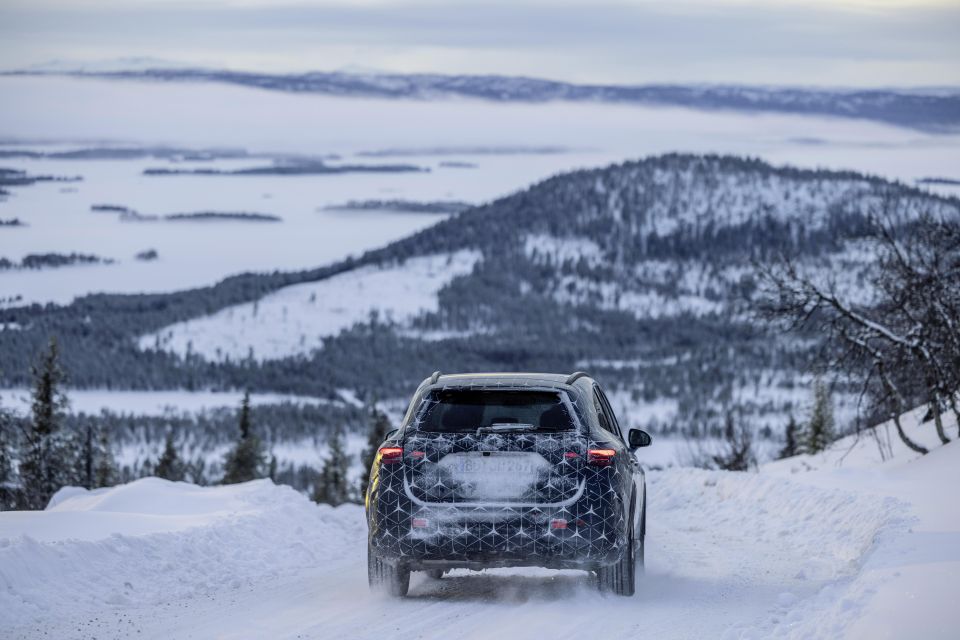
The A45 AMG‘s M139 engine – re-engineered for longitudinal applications – can be combined with an electric motor developing up to 150kW/320Nm, though combined power and torque figures have yet to be released.
In 2021, Mercedes-Benz sold 3435 GLC Wagon and 771 GLC coupe models, for a total of 4206 sales.
That put it slightly behind the BMW X3 (4242 sales). Throw in the 981 X4 sales and this widens the rift between BMW and Mercedes-Benz’s mid-size SUV line-ups. The GLC did outsell the Volvo XC60 (3688 sales), Audi Q5 (3604 sales) and Lexus NX (3091 sales) though.
Click an image to view the full gallery.
Where expert car reviews meet expert car buying – CarExpert gives you trusted advice, personalised service and real savings on your next new car.
Jack Quick is an automotive journalist based in Melbourne. Jack studied journalism and photography at Deakin University in Burwood, and previously represented the university in dance nationally. In his spare time, he loves to pump Charli XCX and play a bit of Grand Theft Auto. He’s also the proud owner of a blue, manual 2020 Suzuki Jimny.


Max Davies
8 Hours Ago


William Stopford
8 Hours Ago


Derek Fung
8 Hours Ago


Max Davies
16 Hours Ago


William Stopford
1 Day Ago


Ben Zachariah
1 Day Ago